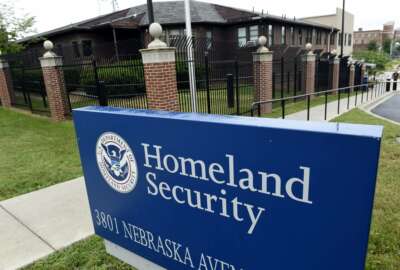

The Office of Management and Budget is expected to release a new memo in the next month or so detailing new goals and a strategy for shared services.
At first glance, the Technology Modernization Fund Board’s $20.7 million loan to the General Services Administration made perfect sense. GSA’s proposal to modernize its federal payroll system checked off many of the boxes the board was looking for — updating legacy IT and processes, improving a shared service and addressing a high-value program that others could learn and benefit from.
But when you dig a little deeper into the board’s decision to lend GSA money that by law they have to pay back, it seems as though something bigger and possibly more disruptive is at play.
Industry and former government officials said all signs point to the Office of Management and Budget consolidating several existing federal payroll providers either into GSA or through the use of quality service management offices through GSA.
Experts said the fact is GSA can only pay the loan back through a limited number of ways:
And many also said it’s only through the third option that GSA can attain the savings necessary to pay back almost $21 million over the next five years.
“I think it will be major consolidation of payroll providers in civilian market because I’m not sure how you go any other way,” a former federal official with knowledge of payroll and shared services, who requested anonymity because they didn’t get permission to speak to the press, said. “I could see either a movement of agencies onto a new platform or GSA is going to contract with companies A and B and set up these platforms and agencies are going to move to it and then charge agencies a fee. The fee usually is per head for all processing, and that would create a revenue stream to include a payback percentage for the TMF loan. They clearly cannot take it from appropriated funds or the revolving funds at GSA. So to pay back the loan it’s either through more customers or fewer people, so it very much looks like consolidation of payroll providers.”
GSA did not respond to repeated requests for details on how it plans to pay back the TMF loan or what are its plans for NewPay.



“As was evidenced during the lapse, the current complexity of the payroll environment showcased a critical need for modernization. We hope to apply the success of the NewPay program across the government and to other payroll providers,” the official said. “For many years agencies have been directed to develop strategic plans regarding specific common administrative functions. As agencies continuously evaluate performance, security and status of their current solutions for these functions, they will consider more modern solutions as part of their individual strategic planning processes. In the example of payroll, accelerating the availability of modern payroll solutions through NewPay will provide more timely solution alternatives for consideration.”
Margaret Weichert, the deputy director for management at OMB and acting Office of Personnel Management director, said in an interview with Federal News Network it’s too early to know exactly how many payroll providers will exist in the end, but it will be fewer than the four today.
“There are agencies today who provide services that don’t want to be in that business and want to focus on that mission. So GSA, their core mission is to support others in government,” Weichert said. “NewPay is an absolute priority. The proof will be in the pudding in terms of how quickly and how effectively we can roll out the new program before I can answer the final question about how many.”
Another industry source highlighted a potential fourth way GSA could pay the money back, which is through appropriations.
A little known provision in the Modernizing Government Technology (MGT) Act lets agencies restructure their appropriations requests.
The law states, “An agency may reduce out-year budget requests in existing IT accounts and restructure the agency’s request to instead include an appropriations request in the IT WCF that will then be used to repay the TMF.”
Of course that approach may not be too popular with folks on Capitol Hill given Reps. Will Hurd (R-Texas) and Gerry Connolly (D-Va.) push to save money and use it for IT modernization efforts.
This theory of consolidation is underscored in the recent draft request for information GSA issued to the two teams of payroll modernization providers under the $2.5 billion blanket purchase agreement it awarded in September.
The draft RFI to the two teams, which Federal News Network obtained, states a potential forthcoming task order would be limited to “GSA and a component of a second shared service provider, to be identified. The scope of this acquisition is to migrate federal employees from the agencies…to modern, secure, cost-effective SaaS solutions.”
Later on in the RFI, the consolidation plan becomes clearer with GSA asking for services ranging from its 21,000 customers up to hundreds of thousands of customers.
“The contractor shall provide approximately 300,000 Integrated Payroll and WSLM software-as-a-service subscription for a to-be identified SSP and its customers,” the RFI states.
GSA only has about 21,000 customers under its payroll and time-and-attendance services, meaning the other 279,000 customers must come from one of two places: The National Finance Center at the Agriculture Department or the Interior Business Center. NFC currently serves more than 600,000 federal employees, while IBC serves about 150 large and small agencies.
An industry source familiar with the NFC said the shared services provider has been bracing for big changes over the last six months.
“The NFC has been under a hiring freeze of sorts. It may not be official, but they haven’t been able to fill open positions and there is a feeling that the NFC as they know it is going away,” the industry source said. “If you just changed the NFC’s reporting structure, but it still continues to be NFC, I don’t think it’s a big deal. But it could take five to 10 years to move into NewPay based on the current complexities of the system that is run on mainframes and serves more than 100 different types of payroll functions.”
This source and others said the most likely first step of consolidation is through the quality service management organization approach outlined in the President’s Management Agenda, which also would give GSA additional revenue to pay back the TMF loan.
“GSA could charge NFC or IBC for those NewPay services and act as a third party of sort,” the source said.

Another industry source, who also requested anonymity because their current company is involved in federal shared services, said a good way to describe the QSM approach is IBC or NFC would be subcontractors to GSA, which is acting as the prime contractor with the NewPay vendors.
“I don’t know if the end game is consolidation, but they have to get started someplace and this hub-and-spoke model where IBC will still be part of Interior or NFC will still be part of Agriculture, but they will work closely with GSA,” the third industry source said. “Historically, no one has owned oversight over the federal shared service providers. The agency CFOs didn’t want them. They were orphans in some sense. This new model at GSA gives them a home where they can work together to improve.”
To that end, Hill and government sources confirmed the Office of Management and Budget is expected to issue a new shared services memo in the coming month or so that details this QSM strategy.
A Hill source said the memo also coincides with IBC, NFC, the Defense Financial Accounting Service and GSA had to submit plans in 2018 for how they would improve their shared service offerings through NewPay.
And add to that, the 2020 budget request that went to Capitol Hill earlier this month, IBC and NFC asked for money to modernize their payroll services.
USDA asked Congress for an increase of $7.5 million in 2020 “to begin to transition USDA employee payroll accounts from the current legacy system to the NewPay system, which will be more user friendly, improve data security, and save future costs.”
Interior, meanwhile, requested $12.5 million “to support implementation planning and transition activities for the governmentwide payroll and Work Schedule and Leave Management modernization initiative entitled NewPay.”
This takes us back to the TMF loan. GSA’s request for any extra funding for NewPay in 2020 is unclear.
“The request includes $5.2 million to support agency reform priorities including the OPM transition and the NewPay million to support initiative, offset by a decrease in the working capital fund contribution,” GSA budget justification states. “OPM and GSA will be one of the first agencies to join under the blanket purchase agreement in FY 2019, which will start the configuration phase of NewPay, followed by migrations scheduled for FY 2020.”
Now add to the fact that GSA states in the budget document that each of the payroll shared service providers will migrate “at least one agency (approximately 10,000 employees) to the new platform, and adoption of a Talent Management suite by four agencies.”
It becomes clearer that GSA will pay back the TMF loan through the management of the QSM organizations.
The irony in all of this is GSA got out of the financial management line of business services business in 2015, moving its financial management solution to USDA, and it wanted to stop providing human resources services in 2013. Now through the QSMs, it looks like GSA is getting deeper into providing these services and managing the future of shared services both at the tactical and operational levels.
“GSA will leverage the new-shared service model that focuses on data standardization, modernization and security into service offerings. This will benefit the American people by transitioning government back office operations to modern technology, reducing costs and risk, and leveraging commercial best practice,” GSA states in its budget justification.
Experts said there are definite concerns about consolidating to one major payroll provider for civilian agencies as DFAS and the State Department — the other two providers — will continue to serve their specific customer bases.
But at the same time, GSA has to get started because no one argues that federal payroll systems are working well.
“To move 2 million accounts and move it in a way that no one can screw it up will take five or six years. So the TMF giving them the ability to get started now as opposed to waiting for the 2020 or 2021 budget is good, but I don’t know how far $21 million will go,” one industry source said. “I know people are concerned about the change, but when I look at the physical placement of the providers, it makes sense they are and continue to be distributed in different parts of the country. This is for a number of reasons including for continuity of operations and for workforce considerations because you can over-saturate an area in terms of finding workers. So the QSM is an ideal model in many ways.”
Copyright © 2024 Federal News Network. All rights reserved. This website is not intended for users located within the European Economic Area.
Jason Miller is executive editor of Federal News Network and directs news coverage on the people, policy and programs of the federal government.
Follow @jmillerWFED
